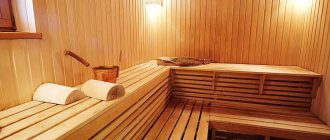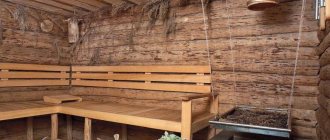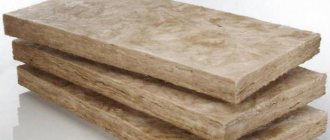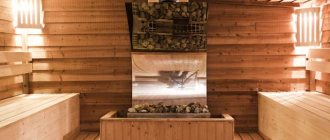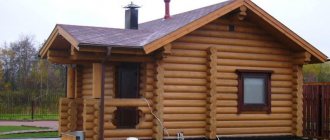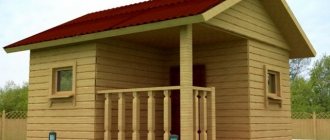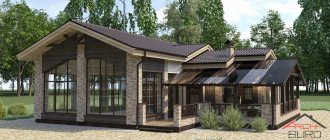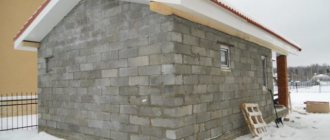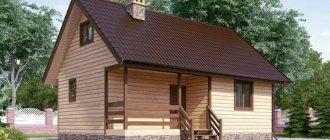It's simple: lack of sealant = heat leakage and moisture getting into the seams between boards or logs. In warm conditions, there is an almost 100% chance of wood rot forming.
Compositions that are called universal in construction stores or online will not be suitable in this case. Why? – and how then to choose?
Insulation with jute rope is not suitable for a bathhouse
Adhesive sealant for seams, gray
CEMMIX Adhesive-sealant for seams is a one-component polyurethane sealant for sealing various seams, junctions of steps and walls, entry of pipes and ventilation systems and rigid-elastic gluing of various materials.
More details
Traditional methods of sealing cracks
There are many “old-fashioned” methods of solving this issue that have been proven over the years.
In some cases, they are more effective than the use of modern means. Using the cord . Using a cord selected according to the width of the hole, you can seal cracks not only in the floor, but also on the walls. The cord will close the gap and eliminate the unpleasant creaking of the boards.
To carry out repairs, you will need to prepare a cord, rope or twine, putty, wood glue or PVA, and sawdust from any material. Work process:
- Cover the cord completely with glue.
- Make a mixture from sawdust, putty and glue.
- Deepen the cord into the gap so that there is from two to four millimeters from the floor surface to it.
- Fill the distance from the rope to the surface with the prepared mixture. The putty composition shrinks when it dries, so the gap is filled with the mixture with a small margin on top.
Adhesive sealant for seams, brown
CEMMIX Adhesive-sealant for seams is a one-component polyurethane sealant for sealing various seams, junctions of steps and walls, entry of pipes and ventilation systems and rigid-elastic gluing of various materials.
More details
But today, when the chemical industry develops and produces a huge amount of a wide variety of materials, it makes sense to change traditions a little, especially since caulking has no other advantages, and there are many disadvantages:
- this is a labor-intensive, lengthy process that requires certain qualifications;
- the caulk needs to be renewed periodically (every 3–5 years), because the materials cake;
- During the caulking process, the height of the building increases, which leads to the appearance of cracks around window and door frames.
Where in the bathhouse is sealing required?
In a wooden bathhouse, several areas require sealing:
- interventional joints;
- chimney;
- places of passage of communications;
- junctions of window and door frames;
- junction of the floor to the walls, seams of the tile floor.
It is advisable to fill all these areas with high-quality modern sealants, which, with the right sealant chosen, will be easier, faster and more reliable than caulking a bathhouse.
Let's consider what requirements a sealant suitable for baths must meet:
- environmental safety, absence of toxic fumes (in this case plays an important role);
- resistance to high and low temperatures;
- high adhesion to porous materials - wood, as well as metal, glass and other materials used in construction;
- moisture resistance;
- resistance to solar radiation (since the sealant is also used for external seams);
- high elasticity (which is important when working with wood).
Not the least important role is played by such characteristics as ease of use without special devices (owners often build baths themselves) and the ability, if desired, to paint the seam.
What should not be used in the steam room
You should not use silicone or polyurethane compounds for this room. They often contain substances that are released by temperature changes. Often such compositions are prohibited for use in interior spaces.
What sealant should I buy for treating a steam room? One that can easily withstand all the problems and features of the room and will last longer than standard compounds.
The professional staff of “TORVENS” will cope with the task
What types of sealants are there, and what sealants can be chosen for a bath?
Today, there are different types of sealants on the market depending on their main components:
- acrylic;
- silicone;
- rubber;
- thiokol;
- polyurethane.
Acrylic sealants are environmentally friendly and widely used for working with wood. However, instability to temperature changes and constant humidity makes them unsuitable for use in a bathhouse.
Silicone sealants are very elastic, waterproof, work in a wide temperature range (from –60° C to +300° C), but do not perform very well when working with wood. During operation, the seams of wooden structures can stretch and contract. While silicone sealant works well when stretched, it may bubble when compressed.
Butyl rubber sealants are not suitable for high temperatures.
Thiokol sealants require certain skills in application, and therefore are not suitable for independent work.
Polyurethane sealants are the best choice for baths. Let's look at why this is so, using the example of Cemmix one-component polyurethane adhesive-sealant for seams.
The first thing worth noting is that this is a one-component adhesive-sealant, which means that it comes ready to use and does not require mixing of several components; It can be used both for filling seams and for gluing various surfaces, that is, the material is universal and easy to use.
Cemmix joint adhesive sealant demonstrates the following characteristics:
- environmental safety, absence of harmful fumes;
- excellent adhesion to different types of building materials, including porous ones (wood);
- no shrinkage during the curing process;
- high elasticity;
- waterproof;
- resistance to solar radiation and chemicals;
- heat resistance and resistance to temperature fluctuations;
- the ability to apply sealant at sub-zero temperatures and on wet surfaces;
- resistance to fungus and mold;
- high mechanical strength;
- service life with retention of properties for more than 10 years.
It should also be noted that the polymerization of Cemmix adhesive-sealant for seams occurs under the influence of air moisture at a high speed (1–2 mm per day). Cemmix adhesive-sealant for seams is available in four shades, but if necessary, the seams can be painted after first testing for compatibility with the selected paint materials.
Thus, Cemmix adhesive-sealant for seams, due to its properties, is optimally suited for sealing seams and joints in baths and steam rooms, providing reliable results for many years of operation.
High-quality sealing of seams in a bath using Cemmix Adhesive-Sealant for Seams allows you to beautifully process seams and joints, reduce the cost of heating a bath, and prevent the appearance of fungus and mold.
Classification of high-temperature compounds
The characteristics of sealants depend on the base of the thermal insulating paste. For the treatment of fireplaces and stoves, compositions based on silicate and silicone are suitable. The first group is heat-resistant sealants that can withstand direct contact with flame, the second group is heat-resistant pastes. Their operating temperature is significantly lower than refractory compounds.
Each type of sealant has its own characteristics and priority areas of use.
Silicate – heat-resistant mixtures
Sealing paste based on sodium silicate. Externally, the material looks like a viscous black mixture. After hardening, an inelastic layer is formed on the surface.
Due to the formation of a rigid seam, it is better to use such sealants in ovens that have already had time to shrink, as well as in devices where the likelihood of vibration loads is reduced
If this requirement is neglected, there is a risk of cracking of the insulating seam.
Technical characteristics of silicate compositions:
- permissible temperature indicators: short-term – 1400-1500°C, long-term – up to 1300°C;
- hardening time – 15 minutes;
- maximum seam thickness – 15 mm;
- release form: plastic tubes;
- linear deformation without destruction of the frozen mass – 7%;
- application conditions – temperature within 1-40°C, the exact value depends on the manufacturer.
Silicate compounds have good adhesive properties. To increase the reliability of the coupling, it is advisable to pre-treat a metal, concrete or brick base with an abrasive.
Not all heat-resistant pastes are fire-resistant sealants and are able to retain their properties when exposed to flame. The packaging must bear the appropriate inscription
Heat-resistant paste is most effective when sealing joints of fixed elements with a similar expansion coefficient.
When is it advisable to use silicate sealant:
- sealing cracks in combustion chambers and other surfaces in contact with fire, as well as high-temperature gases;
- sealing cracks formed between steel and cast iron elements of stove appliances and brickwork;
- sealing of chimneys that discharge high-temperature gases, for example: solid fuel boilers and sauna stoves;
- processing of casting installation areas;
- eliminating leaks in heating boilers.
Heat-resistant pastes are used when assembling a sandwich chimney - the joining surfaces are treated with sealant.
Silicone – heat-resistant seals
Silicone-based insulating paste has a brownish-reddish color. The shade is due to the addition of iron oxide to the product. Heat-resistant silicone sealants with different operating temperatures are available for sale, the range of values being 170-300°C.
High temperature oven compounds are often confused with automotive sealants. However, they are not interchangeable. Distinctive features of pastes for heating devices: absence of a sharp acidic odor and packaging in tubes, not small tubes
Silicone sealants retain elasticity after drying - the seams are not afraid of deformation loads and shrinkage of ovens. An additional plus is excellent water resistance, which allows the composition to be used to seal cracks in areas where the roof and chimney come into contact. Silicone paste cannot be painted.
Technical characteristics of heat-resistant seals:
- operating temperature range – within +300°С;
- packaging – tubes, packed in 310 ml;
- Drying period – about 20 minutes;
- application on a cold base at above-zero air temperature, but not more than +40°C;
- resistance to UV rays;
- sealing cracks with a depth of 6 mm.
The cost of silicone thermosealant is often lower than its silicate counterpart. However, due to the insufficient temperature threshold, its use is limited to the treatment of not too hot surfaces.
Scope of use:
- sealing brick chimneys in street areas;
- sealing the joints of the exhaust duct and roofing material;
- treatment of smoke exhaust ducts made of metal, brick and sandwich panels, provided that boilers with an efficiency of over 90% are used - the temperature of the exhaust gases does not exceed +150°C;
- treatment of blind cracks on brick external surfaces of stoves and fireplaces.
The high-temperature composition is also suitable for sealing threaded connections when installing heating circuits.
Adhesive sealant for seams white
CEMMIX Adhesive-sealant for seams is a one-component polyurethane sealant for sealing various seams, junctions of steps and walls, entry of pipes and ventilation systems and rigid-elastic gluing of various materials.
More details
Foundation waterproofing
To properly waterproof a foundation, it is necessary to place drainage material underneath it. A cushion consisting of sand and gravel is suitable for this. Its thickness is approximately 20 centimeters. Including it in the design ensures that water does not stagnate under the foundation itself.
After installing the drainage, the formwork is installed, then the foundation is poured. After the concrete base has hardened, the foundation is waterproofed using horizontal and vertical methods.
Creating reliable hydraulic protection of the foundation is possible with the combined use of vertical and horizontal insulation.
Horizontal waterproofing is carried out using several layers of roofing material, which is laid directly on the foundation. The number of layers should be three or more.
Vertical waterproofing is more difficult to implement than horizontal waterproofing. It should start from the base of the foundation, and from above it should be joined to the horizontal waterproofing.
There are two main technological methods for implementing the vertical waterproofing technique:
- Pasting. To implement it, fused rolled materials are used, which include bitumen and polymer substances. Also, adhesive waterproofing can be carried out using polymer membranes. An important feature of the membrane material is the absence of continuous adhesion to the base. As a result, the durability of the membrane does not depend on the deformation of the elements and the entire structure. Membrane materials can be installed on a damp base. The structure of some membranes includes stabilizing components that make them resistant to aggressive substances (alkali, acid, salt) and biological agents. In order to protect membranes from the action of oils, solvent compounds and fatty substances, needle-punched geotextiles are used.
- Coating. Capable of highly reliable protection of the foundation from capillary penetration of liquid. Produced using bitumen-polymer or bitumen mastics. As a result, you can get a seamless coating, which is applied either manually or mechanically using spraying. Before starting waterproofing measures, the foundation should be cleaned of dirt and unevenness should be eliminated using cement building mixtures.
The waterproofing composition is applied in layers, the number and thickness of layers are determined by the depth of the foundation. The next layer must be applied after the previous one has completely dried.
If you use polymer mastic materials when creating a waterproofing foundation for a bathhouse, then the requirements for the surface will not be so stringent: the moisture content of the base can be up to 8%. To check the readiness of the surface to continue work, it is necessary to lay polyethylene on 1 square meter of area. If condensed moisture does not appear on the film during the day, then a waterproofing compound can be applied.
In order to improve the adhesion of the concrete base and the coating waterproofing, a primer should be used. A primer is a type of primer used to prepare the base for coating. Bitumen primer (which is used as a primer) can be purchased ready-made, but you can also use a homemade mixture. You should select a primer that matches the composition of the mastic material.
Plaster waterproofing of the foundation is done using a mineral-cement mortar , which includes additional components to increase moisture resistance. The thickness of all applied layers can reach 22 millimeters.
If the construction of a bathhouse is carried out near a reservoir, the quality of waterproofing of the foundation is of particular importance and should not be neglected.
Upon completion of waterproofing the foundation, it is necessary to fill the pit with rich clay around the perimeter. This allows you to form an additional waterproofing layer.
Adhesive sealant for seams black
CEMMIX Adhesive-sealant for seams is a one-component polyurethane sealant for sealing various seams, junctions of steps and walls, entry of pipes and ventilation systems and rigid-elastic gluing of various materials.
More details
Floor waterproofing
Waterproofing the floor in the bathhouse is carried out after the insulation of the walls is completed. The technology of waterproofing measures in this case is determined by the material from which the floor is made. The most common flooring materials in a bathhouse are concrete or wood flooring.
A concrete floor is provided in the washing room and steam room, due to the fact that wood quickly rots in high humidity conditions.
Waterproofing the concrete floor in the steam room and in the washing room is carried out according to two options:
- Coating. The most popular type of waterproofing. To carry it out, the surface is leveled and bitumen or polymer mastic is used. If the instructions specify the application of a number of layers, then they are applied in a perpendicular direction.
- Pasting. First, plywood sheets are fixed to the subfloor, and waterproofing is laid on top of them. This material is asbestos-cellulose or asbestos cardboard, which is impregnated with petroleum bitumen. The edges of the waterproofing are placed on the surface of the walls, after which the joints of the waterproofing with foil wall insulation are secured with aluminum tape. After this, a reinforcing mesh is applied to the waterproofing and a cement screed is poured. Construction tape is used to protect the walls. Tiles are laid on top of the screed.
If the bathhouse is made of logs, then the floors are poured after 1-2 years of shrinkage. If you do this earlier, cracks will form on the concrete floor.
The best waterproofing of concrete floors in washrooms and steam rooms is achieved in a situation where an additional layer of coating waterproofing material is applied on top of the screed.
Adhesive sealant for seams, gray
CEMMIX Adhesive-sealant for seams is a one-component polyurethane sealant for sealing various seams, junctions of steps and walls, entry of pipes and ventilation systems and rigid-elastic gluing of various materials.
More details
Ceiling waterproofing
Waterproofing the ceiling of a bathhouse is carried out in the same way as waterproofing measures are carried out for walls. First, bars are nailed to the rough ceiling, and insulating material is fixed between them. Next, foil waterproofing is secured to the beams (the metallized side should face the inside of the room). Then he nails another row of bars, and the lining (finish ceiling) is fixed to them. This allows for optimal waterproofing protection of the entire room.
Ceiling and roof waterproofing
Adhesive sealant for seams, brown
CEMMIX Adhesive-sealant for seams is a one-component polyurethane sealant for sealing various seams, junctions of steps and walls, entry of pipes and ventilation systems and rigid-elastic gluing of various materials.
More details
Even a non-specialist can use Cemmix Seam Adhesive-Sealant, and a professional result will be guaranteed if the application technology is followed:
- Clean the surfaces from dirt, oils, and old sealant. It is recommended to prime porous surfaces (if in doubt, perform an adhesion test).
- An important requirement for the construction of seams is that they must have only two contact surfaces, otherwise the seam will not be strong. Therefore, at the mouth of the seam, a cord of closed-cell polyethylene foam is placed, which does not have adhesion to Cemmix seam sealant.
- It is recommended to protect the surfaces around the seam with masking tape so that the edges of the seam are even.
- The width of the seam should be twice its depth. This is important in order to ensure uniform polymerization of the material. Otherwise, one of the sides may tear off and the sealant may leak.
- Cemmix adhesive-sealant for seams is applied using a construction gun with a measured movement in one direction.
- Within 15 minutes after application, the sealant can be smoothed with a spatula, moistening it with soapy water and removing excess.
- The masking tape is removed immediately after smoothing the seam. At this time, you can still remove excess sealant. When it hardens, it will have to be cut down.
- During the polymerization process, the sealant remains soft, so it is not recommended to subject it to mechanical stress for several days.
Our favorite baths become even more comfortable and durable, and also take on a stylish, modern look if we apply the right sealant. The optimal choice for sealing all important areas of the bathhouse is Cemmix adhesive-sealant for seams - a universal, reliable, easy-to-use material. You can buy Cemmix adhesive-sealant for seams wholesale from the manufacturer and in retail chains, for example, in Leroy Merlin, as well as in online stores.
You can buy CemPlast, CemBase CEMMIX without leaving your home, with discounts from 5 to 33%!!!!
Buy on Ozon
Buy on Yandex.Market
Buy on Wildberries
Buy at Leroy Merlin
Or you can find the nearest official dealer in your region on our map
← Why is waterproofing of open balconies needed, and how is it done?
How to waterproof a basement floor from groundwater →
Return to list
Comments
Professional sealing services for wooden houses
offers its services for insulating houses made of timber and logs located in Moscow, the Moscow region and surrounding areas.
We are official dealers of manufacturers producing premium sealants Remmers, Ramsauer, Oliva and others. Thanks to this, our customers can order sealing with branded products on favorable terms.
In our company, the main emphasis is on the quality of the services provided. We carry out triple quality control of the work performed. Masters undergo regular training and advanced training.
To contact us, go to the “Contacts” page, where you will find our contact details and the form for submitting an application.
Calculate the cost of painting and insulating your home right now
Select types of work:
Select materials:
News
We are always ready to help
Cemmix has opened a free hotline
to help you with any questions related to construction using concrete additives. Call and ask, our consultants are always ready to help!
Hyperplasticizer
Hyperplasticizers are a new type of plasticizing additives for concrete, ensuring the mobility of the mixture above P5. In addition to plasticity, they increase the water resistance and frost resistance of concrete by 2-3 times.
Algorithm for choosing a suitable tool
Knowing the properties and recommended scope of application of various compositions of high-temperature sealants, it will not be difficult to make the right choice.
So, attention should be paid to the following parameters:
- operating temperature;
- environmental friendliness;
- brand name.
Temperature endurance. The indicator depends on the base of the sealant - silicone or silicate. When choosing, it is necessary to compare the upcoming operating conditions of the paste with the values of the maximum permissible temperature.
For repairing fireboxes, sealing chimneys, combustion chambers, sealing cracks near doors and other stove fittings, only a fire-resistant composition with a maximum permissible temperature is suitable
If you save money and purchase a cheaper analogue, the components will simply burn out over time - the mineral filler will delaminate and you will have to repair the heating device again.
Environmental friendliness. The composition should not contain substances that release toxic volatile compounds when heated. Regular inhalation of such vapors has a negative impact on human health.
To protect yourself, it is better to refrain from purchasing goods from unknown manufacturers at a suspiciously low price. You need to carefully examine the packaging - counterfeits often contain spelling errors, and the text itself may be printed illegibly.
If you suspect a counterfeit, you must ask the seller for a quality certificate and accompanying document. It is better to buy sealant in specialized stores or large construction markets.
Manufacturer company. Among the wide assortment, domestic and foreign ones have won the trust of buyers: MasterTeks , Penosil , Kraftool , Alteco , Tytan , Soudal , Makroflex , etc.
Is it possible to minimize the risk of splits?
The only condition that guarantees minimal cracking is prolonged drying of the logs under natural conditions.
Long-term drying of wood:
- Increases the strength of the log.
- Significantly extends its service life.
When drying logs naturally, it is important to ensure their uniform drying, that is, the same drying rate for both the outer and inner layers of the log house.
This can be achieved by creating certain conditions for complete drying. This is a cool and completely dry place in which the logs are allowed to dry out for at least 2 years.
From the appearance of the cracks we can deduce how long the wood has been drying:
- 1.5-2 years: crack size up to 2-2.5 mm.
- 1-1.5 years: the splits are already expanding to a width of 7-12 mm.
- Several months: the cracks become larger and occupy a distance of 12-25 mm.
To minimize the risk of faults, a compensation (unloading) cut is sometimes formed on raw logs. This measure relieves the growing stress on the wood fibers and ensures they dry out faster.
The cut is carried out according to special standards:
- it is performed along the log;
- has the appearance of a neat, even groove;
- has a thickness of 7-10 mm;
- it is made with a depth of no more than 1/4 of the diameter of the log itself.
When cutting, to protect the tree from moisture, when collecting, the timber is laid with the cut facing up so that the cut is covered by the log lying on top.
Summarize
Acrylic sealants “Accent-125” and “Accent-136” are suitable for sealing the bath. These compositions optimally combine the necessary performance characteristics. They do not interfere with the natural “breathing” of wood, have an affordable price and provide sealing for up to 25 years. Additional protection for the bath can be created with the help of oils and various impregnations; the main thing is not to forget about the environmental friendliness of the material, then the bath will bring only pleasure and improve health for many years.
Requirements for waterproofing materials
In order for waterproofing work to be effective, it is necessary to select materials that meet the following requirements:
- Weather resistance.
- Resistance to microorganisms.
- Water resistance is the property of not allowing liquid to pass through.
- Water resistance is the ability to retain characteristics when exposed to moisture.
- Durability.
- Vapor permeability.
- Resistance to temperature changes.
- Chemical resistance.
- Resistance to mechanical damage.
If the material meets all the listed requirements, it can be selected for waterproofing measures. When purchasing, you should also consider how to waterproof each structural element of the bathhouse.
Bath drain is an important part of the flooring
To ensure that the floor coverings in the bathhouse dry faster and that water does not get into even the non-penetrating floor, a drain channel is installed in it. This aspect needs to be thought through when arranging the foundation of the bathhouse.
Scheme of a simple drain in a bathhouse
A drain ladder is made on the underside of wooden floors made of concrete screed, sloping towards the drain hole. In order for the screed to withstand soil heaving in winter, it is reinforced and a sand or crushed stone cushion under it is pre-prepared. With a properly designed drain, it won't take long to replace wood floors.
Waterproofing in a bathhouse is an important issue, but to protect floors from rotting, it is not enough to waterproof them from the surface. Care must be taken to ensure that the foundation of the bathhouse is properly protected.
A short video on how to make bathhouse floors with your own hands:
Average score of ratings is more than 0
Share link
Comments There are no comments yet, but you could be the first...
Traditional materials: clay, straw, sawdust
Now they are all practically replaced by polymer and mineral insulation. They are produced in a wide range of different compositions, purposes and prices. The use of traditional materials for floor insulation is justified only in a few cases:
- very limited budget for the construction of a bathhouse;
- availability of material at a low price or free of charge (for example, receiving sawdust from a timber processing plant);
- special requirements for the safety and environmental friendliness of materials for the entire bath.
The clay-straw mixture is laid in the same way as ordinary expanded clay. Based on natural materials, many heat-insulating compositions can be created, for example, sawdust concrete, clay concrete, adobe. They are used in accordance with building regulations.
Polymer insulation
Thermal insulation of the floor in the bathhouse is carried out in order to prevent heat leaks. If wooden walls made of thick timber are already sufficiently insulated by themselves, then the floor and ceiling, which are made of thin boards, must be insulated.
Moreover, the thermal insulation characteristics of the finished structure should be approximately the same as those of the walls. The thickness of the floor with insulation, sub-layer and face layer is usually less, since materials with higher thermal insulation characteristics are used than wood for walls.
Insulation of the floor in the bathhouse in the relaxation room (dressing room) and in the steam room and washing room is carried out using different technologies. In the first case, conventional general construction solutions and insulation are used, in the second - only moisture-resistant heat insulators.
Common materials for insulation:
- Based on foamed polystyrene: polystyrene foam in slabs, foam granules for backfilling;
- Based on foamed polyethylene: thermofol in slabs, various mats for insulation;
- From polyurethane foam: spraying polyurethane foam or using ready-made foam elements.
All three types of materials are made on a 100% polymer basis and are not subject to destruction by bacteria (rotting). They also do not break down in water, but it is still not advisable to allow them to get wet.
For example, a group of thermal insulators based on polyurethane foam (foam rubber) ceases to retain heat after getting wet. Polystyrene foam has the highest moisture resistance. It is used very widely. The only negative is the flammability of the material. This must be taken into account when constructing a sauna stove.
